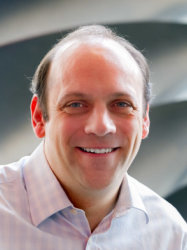Summary
My research Interests focus on the fatigue, micromechanics and design of jet engine, aircraft and reactor materials, particularly superalloys, titanium, NiTi, TWIP steels and zirconium. In my group, we work on problems across the life-cycle from alloy design to processing to fatigue and failure.
A lot of the work involes advanced TEM techniques, complementing work at neutron and synchrotron major facilities like ISIS, Diamond, ESRF and SNS. We have also worked on residual stresses, on in situ microbeam Laue synchrotron diffraction on micropillars, on shock loading using the short-pulse X-ray laser at the Stanford XFEL, as well as more routine techniques like EBSD and conventional lab-based characterisation. We also have substantial capability to make and process novel alloys in our lab.
The Impact of this resarch is the prospect of delivering safer, lower emissions air transport and energy systems. This also supports high value manufacturing in the UK, with the UK's large jet engine exporter alone supporting around 100,000 UK jobs in the supply chain and exports of around £8bn/yr.
Short Bio
David Dye is a Professor of Metallurgy in the Department of Materials at Imperial College, London, UK. He mostly works on the fatigue mechanisms, micromechanics and design of titanium and nickel/cobalt superalloys, with additional interests in twinning induced plasticity steels, zirconium and in superelastic NiTi-based alloys. Primarily, he collaborates with Rolls-Royce and across the aerospace and nuclear sectors. Prior to moving to Imperial in 2003, he worked at the neutron spectroscopy facility in Chalk River, Canada. His undergraduate degree and PhD were from Cambridge University, on the weldability of nickel-base superalloys. He has received a number of awards for his work and has published over 100 journal articles. He was an EPSRC Leadership Fellow, 2010-15 and is presently a Royal Society Industry Fellow.
Selected Publications
Journal Articles
Worsnop FF, Lim RE, Bernier JV, et al., 2022, The influence of alloying on slip intermittency and the implications for dwell fatigue in titanium, Nature Communications, Vol:13, ISSN:2041-1723
Vorontsov VA, McAuliffe TP, Hardy MC, et al., 2022, Precipitate dissolution during deformation induced twin thickening in a CoNi-base superalloy subject to creep, Acta Materialia, Vol:232, ISSN:1359-6454, Pages:1-11
Joseph S, Kontis P, Chang Y, et al., 2022, A cracking oxygen story: a new view of stress corrosion cracking in titanium alloys, Acta Materialia, Vol:227, ISSN:1359-6454, Pages:117687-117687
Shi Y, Joseph S, Saunders EA, et al., 2021, AgCl-induced hot salt stress corrosion cracking in a titanium alloy, Corrosion Science, Vol:187, ISSN:0010-938X, Pages:1-11
Cann JL, De Luca A, Dunand DC, et al., 2021, Sustainability through alloy design: Challenges and opportunities, Progress in Materials Science, Vol:117, ISSN:0079-6425
Coakley J, Higginbotham A, McGonegle D, et al., 2020, Femtosecond quantification of void evolution during rapid material failure, Science Advances, Vol:6, ISSN:2375-2548, Pages:1-10
Xu Y, Joseph S, Karamched P, et al., 2020, Predicting dwell fatigue life in titanium alloys using modelling and experiment, Nature Communications, Vol:11, ISSN:2041-1723
Joseph S, Joseph K, Lindley TC, et al., 2020, The role of dwell hold on the dislocation mechanisms of fatigue in a near alpha titanium alloy, International Journal of Plasticity, Vol:131, ISSN:0749-6419
Chang Y, Lu W, Guenole J, et al., 2019, Ti and its alloys as examples of cryogenic focused ion beam milling of environmentally-sensitive materials, Nature Communications, Vol:10, ISSN:2041-1723, Pages:1-10

